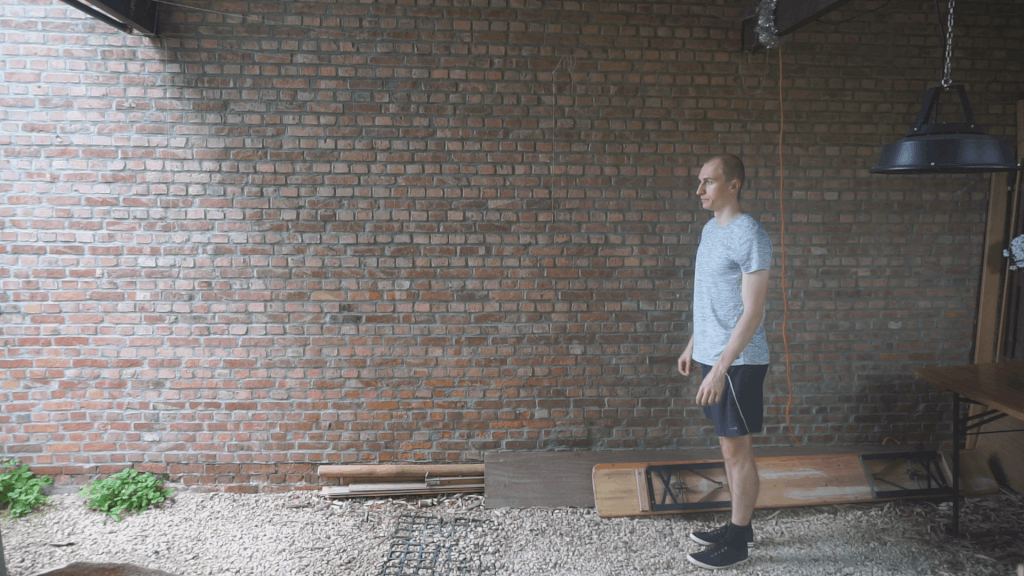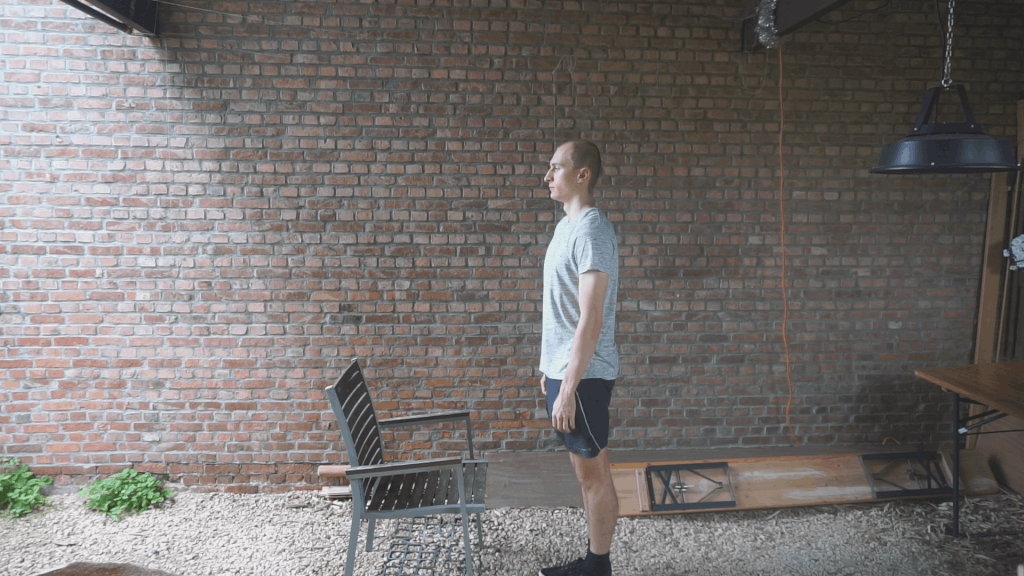Sled pushes definitely offer a challenge and in turn, many benefits. Even so, you may still want some alternatives to sled pushes for certain reasons.
Weighted prowler workout sleds are steel constructions you can load with weights and push or pull as a type of exercise.
Some of the benefits of pushing one of these around include training your cardiovascular system, training muscles like quadriceps, calves, and to some extent glutes, hamstrings, and shoulders, improving coordination, etc.
Whether you don’t enjoy sled pushes, you want a more at-home-friendly alternative, or you want an alternative for any other reason, these alternatives to sled pushes can offer similar effects.
Remember that if you have a suited surface, you can also give “sled pushes” a try with for example weight plates or similar objects instead of a prowler sled. These are far from ideal but can work.
1. Running with extra resistance
Running is one of the most popular aerobic exercises out there. Partly because it is just an aspect of many other sports. Even sled pushes are basically bent-over running with extra resistance.
Regular running with just your body weight can be a great cardiovascular-focused workout on its own. Even so, if you are interested in workout sled pushes, you likely want an extra challenge from external resistance.
There are a few different ways you can do this. Which option is the most convenient for you depends on things like where you work out and what equipment you have available.
The first example is simply running with a weighted vest. Next, you can make this even harder by running up a hill or on an inline treadmill.
Another option is keeping the treadmill turned off, leaning against the frame, and moving the treadmill belt with the help of your leg muscles.
Lastly, you can use speed equipment like a sprinting parachute or with the help of a partner and a suited belt do partner sprints where the other individual partly holds you back.
The versions of this group of sled push alternative options where you stand up more will focus slightly more on your glute muscles.
Additionally, in many of these examples, you won’t be able to adjust the resistance as precisely as in sled pushes.
That being said, running with extra resistance can be a great way to mimic workout sled pushes.
2. Stairmaster
The stairmaster is a gym machine that simulates the movement you would make when climbing an endless flight of stairs. If you have a large flight of stairs available you can use that instead.
Just like sled pushes the stairmaster engages your quadricep, glute, calf, and hamstring muscles, burns a nice amount of calories, improves your cardiovascular health, etc.
To make using the stairmaster more of a challenge like sled pushes you can wear a weighted vest or, if it doesn’t interfere with your balance, hold other weights in your hands.
The stairmaster is also slightly different from sled pushes in a few ways. First of all, unless you hold weights overhead, using a stairmaster does not really engage your shoulders.
Luckily this is not the main point of sled pushes.
Additionally, one of the benefits of using a stairmaster is that it engages your glute muscles slightly more compared to sled pushes with the same resistance.
One potential downside for individuals more experienced with resistance training is that most weighted vests likely won’t be challenging enough compared to a loaded prowler workout sled.
While there are definitely some differences, for many people using a stairmaster with extra weights is a great substitute at the gym for workout sled pushes.
3. Walking lunges
For this next sled push alternative, you need a flat surface with enough room to do a few repetitions. Once you have that, take the following steps to do two walking lunges:
- Stand up straight with your feet about shoulder width apart or wider for better balance.
- Take a big step forward so you can achieve the desired knee angles in the next step. Your back foot only touches the ground with its front part.
- Slowly lower your hips by bending your knees. How far depends on different factors like knee health but at your lowest point you ideally want both of your knees at 90-degree angles. You can use your arms for balance if needed.
- Move the back leg forward while pushing your hips upward with the help of the muscles from the front leg.
- You can either return to the same stance as step 1 with your feet right next to each other or take the next big step.
- Repeat the same movement but with your other leg first.

If you struggle with balance during walking lunges you can put your feet farther apart horizontally speaking.
Besides the extra focus on balance and your glute muscles, walking lunges are a great sled push alternative. Similar to this exercise they engage your quadriceps, glutes, calves, hamstrings, and cardiovascular system.
When doing weighted lunges you can keep the weights low if you want to focus more on cardio, or choose heavier weights to make it more of a resistance training exercise.
For the additional isometric shoulder engagement, you can hold the weights overhead.
4. Broad jumps
Make sure you warm up sufficiently before broad jumps. Even then, this exercise may not be suited for individuals with sensitive knees or ankles. Take the following steps to do a broad jump:
- Stand up straight with your feet about shoulder-width apart.
- Slowly lower your hips by bending your knees. How far depends on different factors like knee health but at your lowest point you ideally want your hips to be at or lower than your knee height. You will likely have to bend forward for balance but keep your back in a straight line throughout the movement.
- Start leaning forward, depending on your calf flexibility you may have to lift your heels off the ground. You can move your arms back if you want to use them in the broad jump.
- Push your body up and forward fast, mainly with the help of your front upper leg muscles. You have to generate enough upward power so that you jump. You can swing your arms forward to jump farther.
- How you want to land depends on what body parts you want to absorb the shock. You generally want to at least fold your legs slightly so your knees don’t absorb all the weight.

The way you train your muscles influences what fitness component you improve. Sled pushes will generally train either muscle endurance or muscle strength.
Broad jumps can be a good alternative if you want to work on your muscle power fitness component. At the same time, you will definitely feel your cardiovascular system working after a few repetitions.
Additionally, broad jumps are a good alternative to sled pushes in the sense that you push your body forward with your legs. This results in slightly less glute muscle engagement and more focus on the quadricep muscles.
5. Step-ups
For step-ups you will need a stable object strong enough to stand on. A plyo box, a stepper, and even some weight benches are examples of suited objects for step-ups.
Once you have one of these, take the following steps to do step-ups:
- Stand upright in front of the object facing toward it with your feet at shoulder-width.
- Raise one foot and put it on the surface of the object. Make sure your sole is entirely on the surface.
- Raise your body by exerting pressure with the leg of the foot that is on the object.
- Put your second foot next to the other one.
- Step down with the first foot.
- Step down with the second foot.
- Do a repetition with the other foot first.

Step-ups are a sled push alternative that can offer very similar benefits. One downside of this option is that you need to pay more attention to balance.
Similar to lunges you can wear/hold light weights during step-ups for more of a cardiovascular workout or heavier weights for more of a resistance training workout.
For additional shoulder muscle engagement, you can potentially hold weights overhead. Keep in mind that this makes step-ups even more challenging in terms of balance.
6. Mountain climbers
Take the following steps to do two mountain climbers:
- Start with your face facing the floor on your hands and knees.
- Move your feet back until your body is in a straight line from your head to your heels. This means that your knees will be off the ground and that you are resting on your hands and feet.
- Move the knee of one leg forward to your chest as far as you comfortably can. Keep your body straight from the heel of the stretched leg to your head throughout the movement.
- Return that leg to the position in step 2.
- Repeat the same movement with your other leg.

Mountain climbers are an alternative to sled pushes in the sense that they are a cardiovascular workout that engages your core muscles a nice amount.
Where this option is relatively different from sled pushes is how much it works other muscles.
Mountain climbers work hip flexors and glutes a small amount but nowhere near the same extent as pushing a prowler sled with weights.
7. Speed squats
Before doing speed squats you want to make sure you warm up sufficiently. Speed squats use your legs in an explosive manner, being warmed up helps you avoid injuries.
Take the following steps to do a speed squat:
- Stand up straight with your feet at more or less shoulder width.
- Lower your hips at a fast speed by bending your knees. How far depends on different factors like knee health but at your lowest point you ideally want your hips to be at or lower than your knee height. You will likely have to bend forward for balance but keep your back in a straight line throughout the movement.
- Push yourself up again fast into starting position by stretching your legs.

Especially speed squats with extra weights can be a great substitute for sled pushes for training both the typical leg muscles and your cardiovascular system.
Choose light weights for more of a cardiovascular workout and heavier weights for more of a resistance training workout.
Two small differences with workout sled pushes are that speed squats will make your glutes through a larger range of motion and focus slightly more on your lower back and erector spinae muscles.
